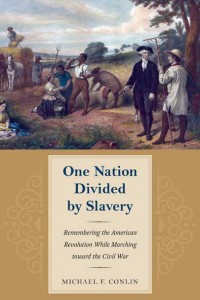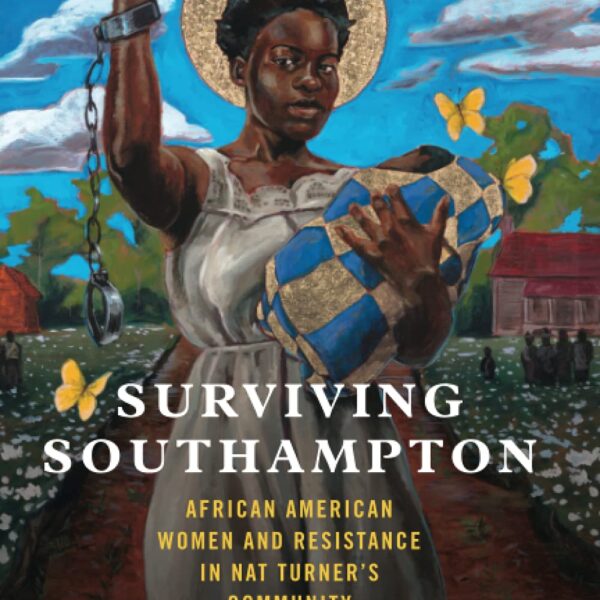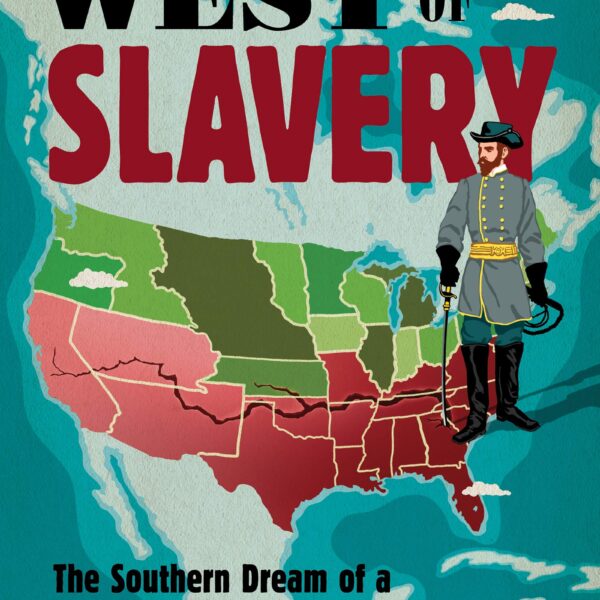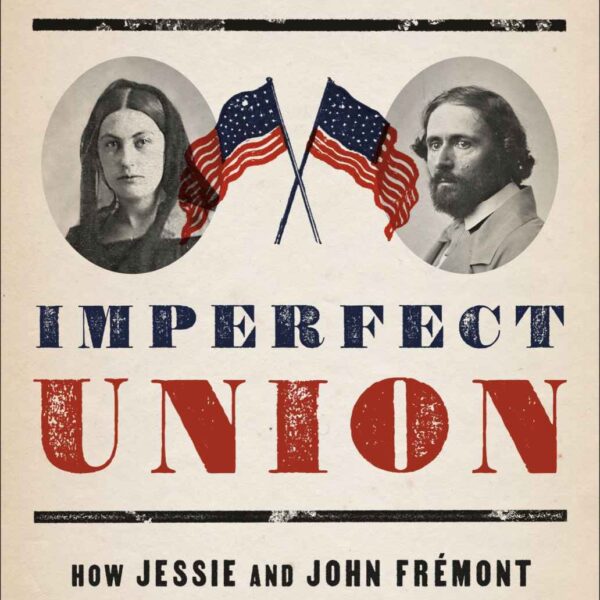One Nation Divided by Slavery: Remembering the American Revolution While Marching toward the Civil War by Michael F. Conlin. Kent State University Press, 2015. Cloth, ISBN: 978-1-60635-240-3. $39.95.
 Michael F. Conlin’s One Nation Divided by Slavery explores connections between the memory of the American Revolution and the Civil War, which provides an excellent avenue for understanding Northern and Southern definitions of what it meant to be “American.” This fascinating text interrogates how antebellum Americans understood the ideological roots of the Revolution (and harkened to the nation’s founding documents and political leaders) to interpret the roots of their American identity. Conlin argues that prior to the Civil War, the nation enjoyed a “shared national culture” in many respects, with the primary difference between North and South revolving around slavery and attempts to reconcile sectional interpretations of the nation’s founding (11-12). Antebellum Northerners and Southerners understood themselves to be part of one nation—albeit, one nation divided by slavery. However, by the 1850s, that belief would become untenable.
Michael F. Conlin’s One Nation Divided by Slavery explores connections between the memory of the American Revolution and the Civil War, which provides an excellent avenue for understanding Northern and Southern definitions of what it meant to be “American.” This fascinating text interrogates how antebellum Americans understood the ideological roots of the Revolution (and harkened to the nation’s founding documents and political leaders) to interpret the roots of their American identity. Conlin argues that prior to the Civil War, the nation enjoyed a “shared national culture” in many respects, with the primary difference between North and South revolving around slavery and attempts to reconcile sectional interpretations of the nation’s founding (11-12). Antebellum Northerners and Southerners understood themselves to be part of one nation—albeit, one nation divided by slavery. However, by the 1850s, that belief would become untenable.
Conlin centers his narrative on slavery, both because of its role in shaping Revolutionary era rhetoric and its place as the key political issue of the antebellum era. With this framing in mind, he structures his analysis around three categories of participants: those who supported slavery, those who opposed slavery, and those who fell at the center of the ideological spectrum. Within each category (which he recognizes as fluid and diverse), he explores the intersections between politics and patriotism. How did men and women reconcile the natural rights rhetoric of the Declaration of Independence with holding others in bondage? What role did the iconic battles of the Revolution—Bunker Hill, Cowpens, and others—play in shaping national identity? How did Americans remember the Founding Fathers and their “ambiguous legacies regarding slavery, compromise, and the Union?” (15). These are the book’s central questions, and each is situated within the contexts of national and sectional identity.
The value of Conlin’s work lies in how he uses the American Revolution and the Founders as an entry point into antebellum sectional divides. Chapter 1, “The Fourth of July: Independence for and from Slavery Day,” addresses how Northerners and Southerners commemorated their independence from Great Britain. Although there were commonalities in these celebrations—including fireworks and food—white Southerners preferred to emphasize the Constitution and its support of property rights, while Northerners and black Southerners honed in on the Declaration of Independence’s natural rights ideology. As the sectional crisis deepened, Fourth of July speeches by fire-eaters became a forum for promoting challenges to the “tyrannical” federal government.
Chapter 2, “Thomas Jefferson: Proto-Abolitionist and Paternal Slavemaster,” focuses on how Americans interpreted Jefferson’s often contradictory stance on slavery, shaping it to their own ends. Regardless of sectional affiliation, Americans could find support for their positions in Jefferson; as Conlin writes, “no matter the answer they gave to the ‘Slavery question,’ antebellum Americans believed that Jefferson was on their side” (38).
Chapter 3, “George Washington: Father of a Slaveholding Republic and Revolutionary Emancipator,” illustrates how Americans venerated our first President and his military heroics, supported the renovation of Mount Vernon and the building of the Washington Monument, and celebrated his birthday, all while arguing over his ownership of slaves. Chapter 4, “Antebellum History Wars over the American Revolution,” discusses the preservation of battlefields and monuments commemorating the military conflict, and the pilgrimages of antebellum Americans to these hallowed sites. The final chapter, “Finishing What the Founders Started,” outlines how these competing interpretations of the Revolution’s goals and legacies led to the dissolution of the Union.
Although Conlin could extend his analysis to include how gender and class affected the memory of the Revolution, and could also disaggregate the perspectives of Westerners, this well-written, timely monograph enriches our understanding of the sectional conflict, the fluctuating nature of nationalism, and slavery’s role in the memory of the American Revolution.
Kristen Epps is Assistant Professor of History at the University of Central Arkansas.




